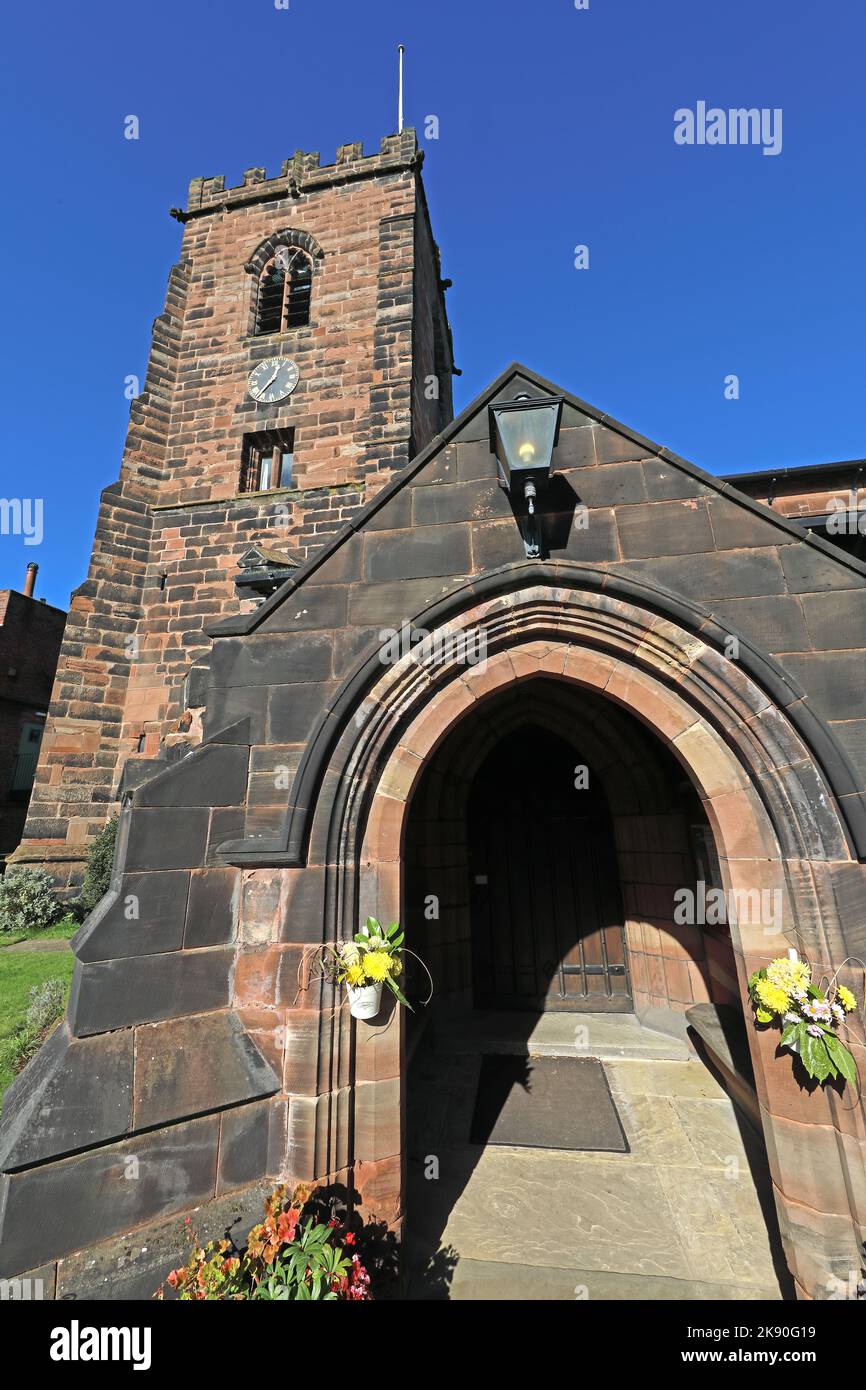St Wilfrids Anglican Norman parish church entrance, Church Lane, Grappenhall Village, Warrington, Cheshire, England, UK

Image details
Contributor:
Tony Smith / Alamy Stock PhotoImage ID:
2K90G19File size:
86.1 MB (3.4 MB Compressed download)Releases:
Model - no | Property - noDo I need a release?Dimensions:
4480 x 6720 px | 37.9 x 56.9 cm | 14.9 x 22.4 inches | 300dpiDate taken:
18 October 2022Location:
Church Lane, Grappenhall Village, Warrington, Cheshire, England, UKMore information:
St Wilfrid's Church is in Church Lane, Grappenhall, a village in Warrington, Cheshire, England. It is designated by Historic England as a Grade I listed building. It is an active Anglican parish church in the diocese of Chester, the archdeaconry of Chester and the deanery of Great Budworth The church is Norman in origin, built probably in the earlier part of the 12th century and completed about 1120. This was a small and simple church, consisting of a nave, chancel and, possibly, an apse. The foundations of this church were discovered during the 1873–74 restoration. A chantry chapel was added by the Boydell family in 1334 in a position where the south aisle now stands. From 1529 the church was largely rebuilt in local sandstone. The old church was demolished and a new nave, chancel, north aisle and a west tower were built. In 1539 the south aisle was added, which incorporated the Boydell chapel. The south porch was added in 1641 and at this time the west wall was strengthened. In 1833 the roof of the nave was raised to form a clerestory and in the 1850s the south aisle was further extended, and a vestry was built. There was a more substantial restoration in 1873–74 by the Lancaster architects Paley and Austin, which included the provision of new floors and roofs, at a cost of about £4, 000 The church is built in red sandstone with a slate roof. Its plan consists of a west tower, a continuous nave and chancel of seven bays with a clerestory, On the outside of the church, immediately below the west window, is a carving of a cat and it is suggested that this might be the origin of the Cheshire cat. A sundial in the churchyard is dated 1714 and is listed at Grade II. At set of stocks at the entrance to the churchyard, also listed at Grade II, have endstones probably dating from the 17th century. The churchyard also contains five war graves of British service personnel, two from World War I and three from World War II